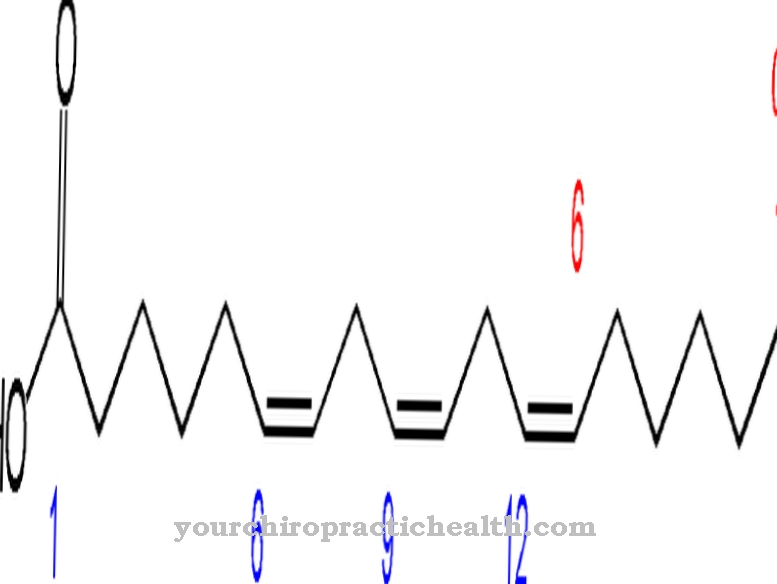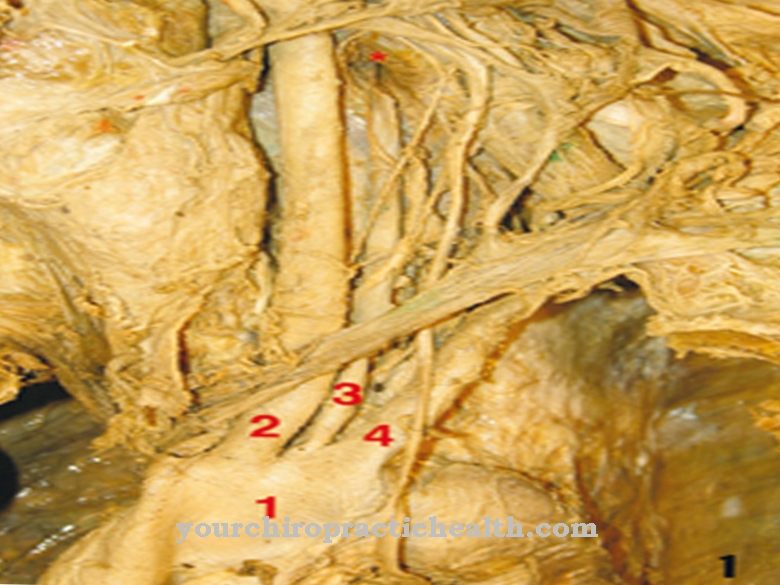The BK virus is a polyomavirus. These describe a group of naked virus particles with a DNA genome. The virus occurs all over the world and almost everyone has been infected with the virus, as it is usually transmitted in childhood and persists for a lifetime. The virus triggers polyomavirus nephropathy, or PVN for short.
What is the BK virus?
The BK virus (short: HPyV-1) is a virus that occurs all over the world. It belongs to the family Polyomaviridae, as well as to the genus Polyomavirus. The Human polyomavirus 1 is a synonym for the BK virus. The pathogen is probably transmitted in childhood and then reaches the kidneys or the central nervous system (CNS), where it ultimately persists for life.
During its persistence, the virus can multiply. However, this only happens when the human body suffers from a weakness of the immune system, as is the case with AIDS or pregnancy. This is why the BK virus is also known as an opportunistic pathogen.
The BK virus is a naked virus particle, which means that it is not surrounded by a lipid shell. This is why the pathogen is much more stable and more resistant to various environmental influences than viruses surrounded by a lipid envelope. The genome that the virus carries is double-stranded DNA.
The pathogen was first found in 1971 in the urine of a patient who had had a kidney transplant. His initials were B. K., which is why the virus was named after him.
Occurrence, Distribution & Properties
The BK virus occurs all over the world. Around 75 percent of the world's population carry the virus. Apparently, the pathogen is transmitted in childhood via smear infection with urine, droplet infection or via contaminated drinking water and remains persistent in humans for a lifetime. If the body becomes infected, the virus spreads to the kidneys or the central nervous system.
When infected for the first time, the virus is infected with no symptoms in healthy people. However, if the human immune system is weakened, it can happen that the pathogen is reactivated and multiplies. Virus replication has also been observed more frequently during therapy with immunosuppressants after a kidney transplant. BK nephropathy occurs in around 5 percent of kidney transplant recipients, around 8 to 13 months after the transplant. When they multiply, there is also an increased risk of infection, as the pathogen is then increasingly excreted in the urine.
The BK virus does not have a lipid envelope, which makes the virus more resistant to various environmental influences. Disinfection alone is not enough, for example, to prevent infection with the virus. This requires special disinfectants.
The BK virus has double-stranded DNA. Only a few viruses are non-enveloped DNA viruses. They also include the adenoviruses, the human papillomavirus, and the second polyomavirus relevant to human medicine, the JC virus.
The DNA can be broken down into two sections. One section contains the non-coding part that regulates the control region, the replication and synthesis of the virus particles. The other section contains the coding portion of the DNA. This contains the viral proteins such as the viral capsid proteins VP1, VP2, VP3 and a so-called agnoprotein. The virus genome is surrounded by an icosahedral capsid. This is a protein shell that forms the virus shape and protects the virus.The capsid is made up of the so-called capsomeres, which in turn are made up of the capsid proteins VP1, VP2 or VP3.
Illnesses & ailments
The BK virus is mainly responsible for the so-called polyomavirus nephropathy. This is a kidney disease that occurs more frequently after kidney transplants. The virus is present in almost everyone, with an infection rate of almost 75 percent. It persists in the epithelial cells of the kidney and multiplies when the immune system is weakened.
This weakening is mainly caused by therapeutic immunosuppression using tacrolimus or mycophenolic acid, which are typically used for treatment after a kidney transplant. The epithelial cells are damaged and lost. The pathogen is increasingly excreted in the urine, which can infect other people with the virus.
There is also an inflammatory reaction, which can be associated with reduced organ function. The polyoma-associated nephropathy (PVN) manifests itself as tubulointerstitial nephritis, i.e. as an inflammation of the kidney. At the beginning of PVN, which occurs in 5 percent of patients after a kidney transplant, there are initially no symptoms. If the blood is examined, however, increased levels of creatinine may occur, which indicate a deterioration in kidney function. In some cases, the ureter narrows, which leads to urinary congestion.
Urinary bladder inflammation can occur, albeit rarely. Other non-specific symptoms are fever, rash and joint pain, as well as flank pain. In the worst case scenario, the graft is rejected.








.jpg)







.jpg)




-durch-vitamin-b12-mangel.jpg)





.jpg)